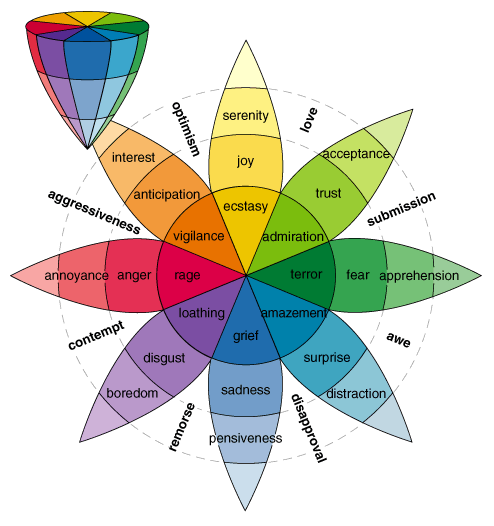Many of us are poor at accurately describing our emotional state. And worse at identifying other people’s. This can be unhelpful when we’re having a emotion-laden conversation.
I think it’s because we tend to have a limited emotional vocabulary. It’s hard to talk about things we can’t name. The words exist – in English there are a few hundred emotion words. The big ones are seldom a problem: joy, sorrow, anger, fear, disgust and surprise. It’s the subtler ones that often escape us. When we seldom use them it’s not surprising they don’t spring to mind when we need them most.
Our brains are highly attuned to the sensation of our own emotions and emotional signals sent by others. But when we’re asked to name these emotional states many of us stumble. It’s like trying to describe a colourful scene when all we know are names of the primary hues – the millions of shades we perceive but can’t easily name remain unmentioned. This can be a hurdle to understanding communication dynamics and to being understood. Especially when we’re not thinking clearly.
Here’s something that may help.
Psychologist Robert Plutchik proposed a visualization of eight primary emotions and their less intense variations arranged in a “colour” wheel that illustrates the interplay of core and related emotions. Using his “Multidimensional Model of the Emotions” we can “mix” emotions to express variations and nuance.
Note: This image has been attributed to Annette DeFarrari , here
Being better able to describe our own emotions lets us interact better with others. This tool can help us stretch our emotional vocabulary to enhance self-awareness and communication. Think of it as an exercise in emotional intelligence.
I hope you find it as useful as I have.

